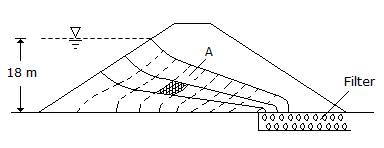Civil Engineering - UPSC Civil Service Exam Questions
Exercise : UPSC Civil Service Exam Questions - Section 14
- UPSC Civil Service Exam Questions - Section 14
- UPSC Civil Service Exam Questions - Section 27
- UPSC Civil Service Exam Questions - Section 26
- UPSC Civil Service Exam Questions - Section 25
- UPSC Civil Service Exam Questions - Section 24
- UPSC Civil Service Exam Questions - Section 23
- UPSC Civil Service Exam Questions - Section 22
- UPSC Civil Service Exam Questions - Section 21
- UPSC Civil Service Exam Questions - Section 20
- UPSC Civil Service Exam Questions - Section 19
- UPSC Civil Service Exam Questions - Section 18
- UPSC Civil Service Exam Questions - Section 17
- UPSC Civil Service Exam Questions - Section 16
- UPSC Civil Service Exam Questions - Section 15
- UPSC Civil Service Exam Questions - Section 1
- UPSC Civil Service Exam Questions - Section 13
- UPSC Civil Service Exam Questions - Section 12
- UPSC Civil Service Exam Questions - Section 11
- UPSC Civil Service Exam Questions - Section 10
- UPSC Civil Service Exam Questions - Section 9
- UPSC Civil Service Exam Questions - Section 8
- UPSC Civil Service Exam Questions - Section 7
- UPSC Civil Service Exam Questions - Section 6
- UPSC Civil Service Exam Questions - Section 5
- UPSC Civil Service Exam Questions - Section 4
- UPSC Civil Service Exam Questions - Section 3
- UPSC Civil Service Exam Questions - Section 2
26.
In the schematic flownet shown in the given figure the hydraulic potential at point A is


27.
A 4-hour rainfall in a catchment of 250 km2 produces rainfall depths of 6.2 cm and 5.0 cm in successive 2-hour unit periods. Assuming the φ index of the soil to be 1.2 cm/hour, the run-off volume in ha-m will be
28.
Consider the following statements :
The critical path in a network plan of a project
1. helps in planning efficient time schedule
2. indicates the shortest path in time
3. helps in crashing the project judiciously
4. helps in encouraging discipline in execution.
Of these statements :
The critical path in a network plan of a project
1. helps in planning efficient time schedule
2. indicates the shortest path in time
3. helps in crashing the project judiciously
4. helps in encouraging discipline in execution.
Of these statements :
29.
Which of the following pairs are correctly matched ?
1. Alpha iron....non magnetic
2. Beta iron....strongly magnetic
3. Gamma iron....non-magnetic and capable of dissolving carbon.
4. Delta iron....non-magnetic and absorbs very little carbon.
Select the correct answer using the codes given below :
1. Alpha iron....non magnetic
2. Beta iron....strongly magnetic
3. Gamma iron....non-magnetic and capable of dissolving carbon.
4. Delta iron....non-magnetic and absorbs very little carbon.
Select the correct answer using the codes given below :
30.
The height of a hydraulic jump in a stilling pool was found to be 10 cm in a model with lp/lm = 36. The prototype jump height would be
Quick links
Quantitative Aptitude
Verbal (English)
Reasoning
Programming
Interview
Placement Papers